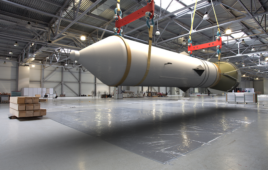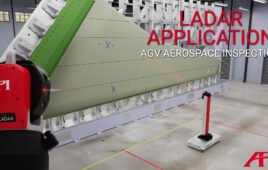The U.S. Navy completed weapons load testing on its F-35B weapons systems Nov. 16, the Navy told UPI. The third phase of developmental testing continues. The F-35B Lightning short takeoff/vertical landing (STOVL) variant is the world’s first supersonic STOVL stealth aircraft and was successfully tested for the ability to withstand crosswinds, flying quality at different aircraft weights, and live fire scenarios. The Patuxent River Integrated Test Force (ITF) has been working with F-35s on board the amphibious assault ship USS America since Oct. 28.
“As we all know, we can’t choose the battle and the location of the battle, so sometimes we have to go into rough seas with heavy swells, heave, roll, pitch, and crosswinds,” said Royal Air Force (RAF) Squadron Leader Andy Edgell, an F-35 test pilot embedded at the Pax River ITF.
“The last couple of days we went and purposely found those nasty conditions and put the jets through those places, and the jet handled fantastically well. So now the external weapons testing should be able to give the fleet a clearance to carry weapons with the rough seas and rough conditions. We know the jet can handle it. A fleet clearance will come — then they can go forth and conduct battle in whatever environment.”
Not everyone is so confident. One of the F-35’s loudest opponents is Director of Operational Test and Evaluation J. Michael Gilmore, who criticized the high cost of operation and pace of development.
The U.S. Navy tested the F-35 at sea against many different kinds of conditions and effects, including different weighs and weapons.
“We’re here to augment the existing weight center-of-gravity effects of the aircraft to expand the fleet envelope wind over deck, and different lateral symmetry and asymmetry configurations,” said F-35 weapons engineer Gabriella Spehn.
“We don’t just keep testing until something goes catastrophically wrong,” she said. “Each engineering discipline has to look back at the data we’ve collected after the most recent flight and completion of each test point, and then figure out if we feel comfortable proceeding to the next point.”
The short takeoff/vertical landing system enables the jets to set down on aircraft carriers with relatively short runways.
Other F-35Bs, delivered to the U.S. Marines, reached initial operational capability on July 31, 2015.
Filed Under: Aerospace + defense




